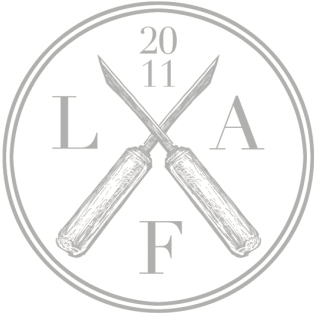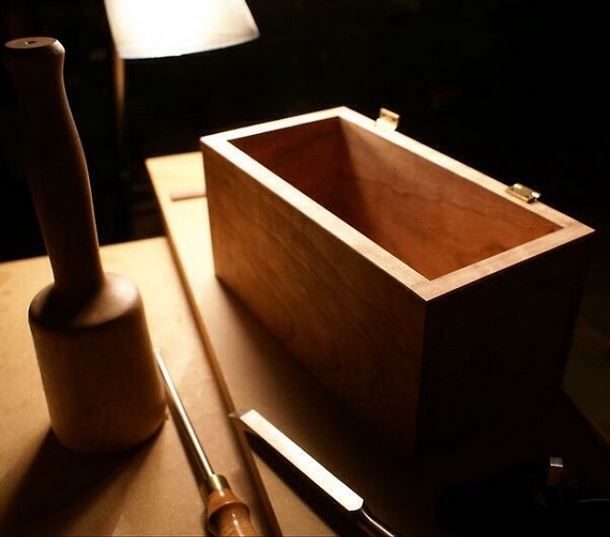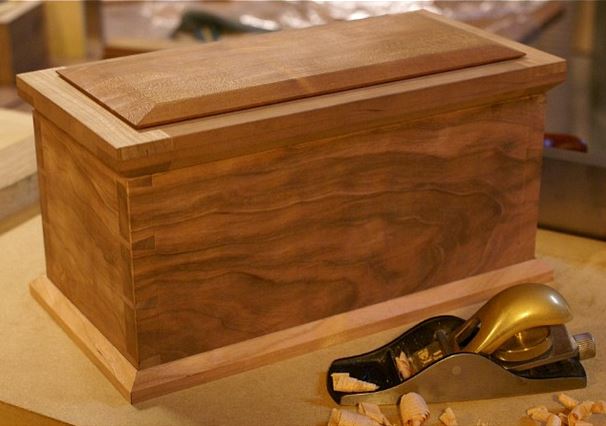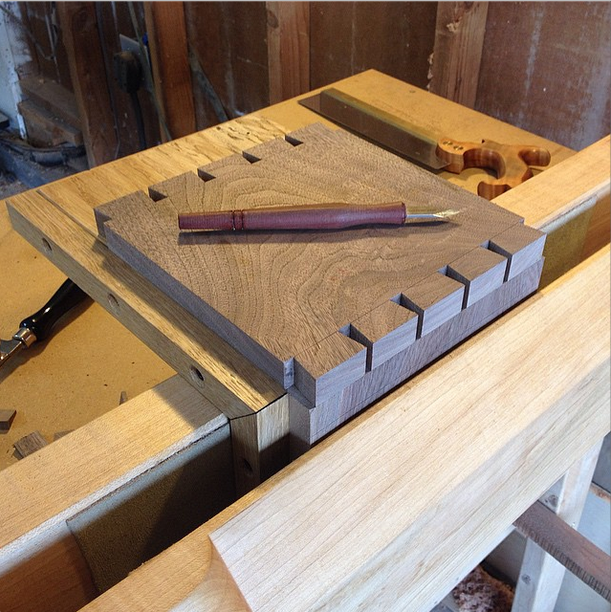Here is a cherry jewelry box I finished in January. The wood is nice air dried stuff from my Amish friends in Ohio. The joinery consists of dovetails for the carcass, dovetails & shiplaps for the tray, and bridle joints & grooves for the lid. The moldings are simple miters with a nice chamfer. The adhesive for this (and all of my other projects) is hide glue. I like Old Brown Glue from William Patrick Edwards in San Diego. The finish is three coats of Tried & True oil varnish. Each coat is applied then left to dry for a week under a fan. After the first coat is dried it is burnished with 0000 steel wool. Then each additional coat is burnished with a fine linen cloth after drying. I like to heat the oil to 140° before applying nice thin coats with a linen cloth.
This was a really fun build – the tiny dovetails for the sliding tray (I like to call them Quailtails) are my favorite part. I am really happy with the fit of the hinges. They’re tiny 1/4” 90° stop hinges from Brusso. Here’s a little video of the action of the sliding tray.
After I saw out the waste between the pins I like to check the fit of the dovetails (before chopping out the baselines). I made the half pins on the bottom much larger so when the molding is applied there is an equal reveal between half pins.































